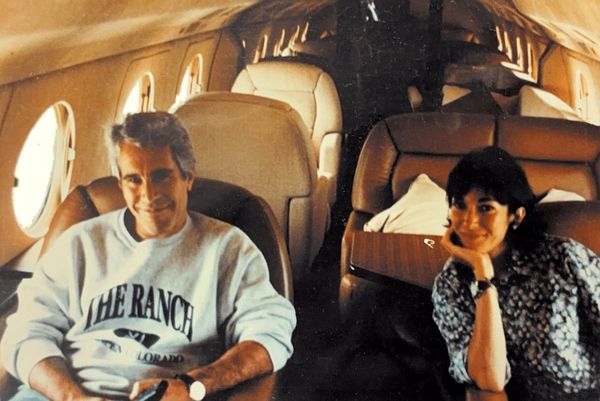Airport security continues to evolve since 9/11, and it's possible that within the next decade or so, passengers will be able to sail through a virtually invisible screening portal without stopping.
- That means shoes stay on, electronics stay in the bag and pockets don't have to be emptied.
Why it matters: Everyone wants to avoid another terrorist attack like the one that killed nearly 3,000 people on Sept. 11, 2001. But the security measures put in place since then — while mostly effective — have also made air travel more inconvenient and frustrating.
- These new advances, if they work, have the potential to relieve a lot of those frustrations — while still keeping travelers safe.
Flashback: The intrusive airport screening methods we've come to live with didn't happen all at once.
- TSA started scanning all checked bags in December 2002, but it wasn't until August 2006 that passengers were required to remove their shoes. A month later, TSA limited liquids in carry-on bags to 3.4 ounces or less.
- The first full body scanners appeared in 2010, and TSA PreCheck for trusted travelers was introduced in 2011.
- In July 2018, TSA started testing CT scanners to give officers a 3D view of what's inside carry-on bags.
Where it stands: With 430 airports nationwide, it will be years before TSA can install these 3D baggage scanners and full body imaging tech at every checkpoint, a TSA spokesman told Axios.
- Meanwhile, its innovation task force is working closely with industry and government researchers to evaluate new technologies that enhance security and improve the customer experience.
- For example, TSA is testing kiosks equipped with facial-recognition technology to check photo IDs and boarding passes, AP reports, though critics say such systems too often make mistakes.
What's happening: Some new technologies are already close to deployment.
- New shoe scanning technology and enhanced, high-definition body scanners will begin deployment at airports starting in a few years.
- These enhanced imaging systems will make it easier for TSA to identify threats while cutting down on false alarms requiring pat-downs or other secondary screening.
- Both systems were developed at the U.S. Department of Energy’s Pacific Northwest National Laboratory and licensed to a security company called Liberty Defense.
- Other PNNL technologies can differentiate powders from liquids in baggage or replace bomb-sniffing dogs at security checkpoints.
What's next: Better imaging technology, along with artificial intelligence and machine learning, could lead to self-screening systems or contactless security portals for low-risk travelers.
- Several companies, including Evolv Technologies and Liberty Defense, have developed walk-through screening systems for a variety of venues.
- Aviation security experts expect these technologies to be deployed in airports in 10 or 15 years, perhaps sooner.
How it works: Liberty's Hexwave system, for instance, can screen up to 1,000 people per hour.
- Passengers walk between two panels that use millimeter wave technology to capture a reflection of their body.
- AI analyzes the data at a rate of 14 frames per second to provide automated decisions in real time — green or red for "go" or "no go" — to security operators.
- It can detect both metallic and non-metallic objects like 3D printed guns, and plastic or liquid explosives, CEO Bill Frain tells Axios.
My thought bubble: It reminds me of this scene from Arnold Schwarzenegger's 2012 film, "Total Recall."
The bottom line: The challenge for airports and TSA officials is to balance the need for enhanced security with consumers' desire for a pleasant and seamless travel experience.
Editor's note: This story has been corrected to note that the shoe scanning technology will be deployed starting in a few years, not in late 2022.






